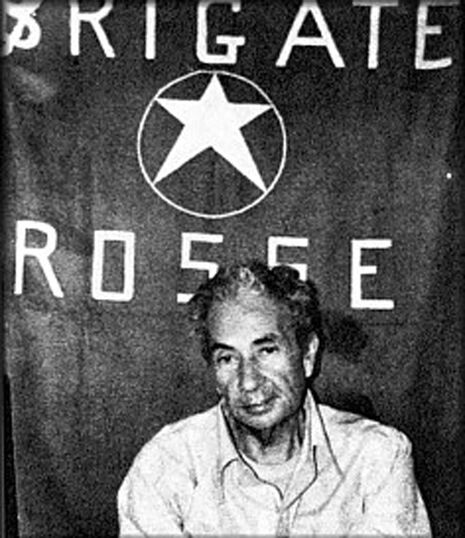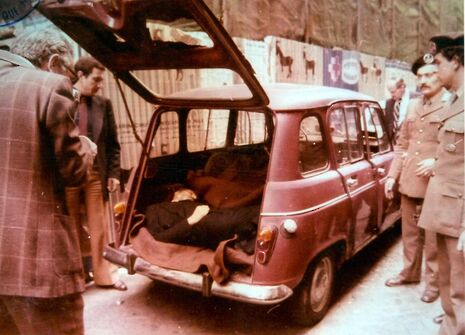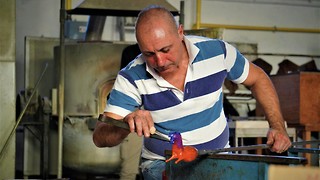The murder of Aldo Moro
Unbeknownst to many, the kidnapping and murder of Italian statesman Aldo Moro remains one of the mysteries of the 20th century

In May 1978, my father and his colleague were refereeing a football match at an international school north of Rome when a police helicopter landed in the centre circle, requesting directions to a Via Gradoli. With an apparently better knowledge of Rome’s urban geography than its native police force, they pointed them on their way. Little did my father know, the police were searching for Aldo Moro, the President of the Christian Democrats Party (DC) and former Prime Minister of Italy. Moro had been kidnapped by the Red Brigades, the Marxist-Leninist terrorist group which wreaked havoc in Italy in the 1970s in what were known as the ‘Anni di Piombi’ (the ‘Years of Lead’). Unfortunately, the police were too late. On 9th May 1978 the statesman Aldo Moro was murdered by the Red Brigades.
It may seem that today in Britain and in Europe we are experiencing troubled times, with the migrant crisis and Brexit dominating the news. However, the political situation in Italy in the 1970s was just as, if not more, serious. And while everyone of my generation is familiar with the assassination of John F. Kennedy and the conspiracy stories surrounding the US President’s fate, how many are aware of the kidnapping and murder of Aldo Moro?
While it is no secret that Moro was kidnapped and murdered after 55 days of incarceration by the Red Brigades, delving deeper into the story reveals that the Moro Affair is a web of confusion, obfuscated by the conflicting statements, denials and the contradictions of the Italian authorities involved. Whether this came about through professional incompetence or, as some would claim, if it was deliberate, remains uncertain to this day.
Moro was kidnapped on March 16th 1978, the very day he was supposed to sign an unprecedented accord with the Italian Communist Party (PCI), which would have created a centre-left coalition between the DC and the PCI as a means of sealing the ‘Historic Compromise’. The deal would have given the communists an active government role in Italy (a prominent NATO power at the time of the Wold War) for the first time since the Second World War, and was aimed at stalling the burgeoning revolutionary spirit, stirred up by economic and social discontent. Needless to say it was seen both domestically and internationally as a threat to the Western Alliance. With the Cold War a lurking presence in international affairs, Moro’s mediations spelled potential disaster for many western powers, and those on the right within his own country. On the extreme left, the Red Brigades also opposed the idea: the ‘Historic Compromise’ dampened their attempts to undermine the Italian state and hampered their goal of ‘Marxist upheaval’ led by a ‘revolutionary proletariat.’
There was no question about the culpability of the Red Brigades: nine out of the 11 members were caught and imprisoned. However, in light of the numerous conflicting testimonies and versions of the truth, it would be reductive to suggests that the Red Brigades were operating as a lone wolf terrorist organisation. Many conspiracy theories surround the event, including some which suggest foreign involvement. It has been claimed that the attack was puppet-mastered by the Soviet Union, or that the Red Brigades had been infiltrated by the CIA, or even by Operation Gladio, an alleged, clandestine NATO operation aimed at thwarting Communist influence in western Europe during the Cold War.
“39 years on from the kidnapping and murder of the Italian statesman, with the web no less tangled, it seems that the Moro Affair is likely to remain one of the mysteries of the 20th century.”
While there is no consensus on who was or was not behind the Moro Affair, it is widely accepted that the case is far murkier than the state would have us believe. The carabinieri general Dalla Chiesa who had led investigations into Moro’s murder was later sent to Palermo as prefect where he was killed in the midst of the mafia wars. As journalist Andrew Gumbel reported, it is suspected that Dalla Chiesa was sent there to be eliminated as a result of knowing too much. The investigative journalist Mino Pecorelli, who was believed to be on the point of publishing incriminating information about then Prime Minister Giulio Andreotti’s role in the case, was shot dead. Of course, as Tobias Hof points out, members of left-wing parliamentary and non-parliamentary groups accused the DC of trying to block the further influence of the left in Italian society and politics, viewing the Italian government (under the leadership of Prime Minister Giulio Andreotti) as an accomplice in Moro’s murder, if not the mastermind. They are not the only ones, however.
Ferdinando Imposimato, the Honorary President of the Supreme Court of Italy and presiding judge in the Moro Affair, boldly stated that “the murder of Aldo Moro was carried out at the hands of the Red Brigades, but also and above all by the will of Giulio Andreotti…”, the notorious statesman immortalised in Paolo Sorrentino’s 2008 film Il Divo. Imposimato’s incriminating claim is rendered all the more credible by the fact that Andreotti had been put on trial for murder before (namely for the assassination of Pecorelli), and was charged with membership of a mafia association and involvement in organised crime in the famous Mani Pulite anti-mafia trials in the 1990s.
Some put forward the view that the Italian state’s involvement in the Moro Affair was perhaps not as transparent as it ought to have been, supported by the fact that so many details, from the kidnapping to the murder, just do not add up. One of the more bizarre elements is the story of a séance in April 1978, involving a Ouija board and Romano Prodi, the former European Commission president who served twice as prime minister of Italy. The story goes that when Prodi and six other academics from the University of Bologna asked the ‘spirit’ about the location of Moro’s incarceration, three towns in the Lazio region were mentioned: Viterbo, Bolsena, and Gradoli. Following the supernatural tip-off, the police virtually ransacked the town of Gradoli to no avail, but apparently did not initially realise that there existed a Via Gradoli on the outskirts of Rome. Curiously, though, in the notes of the Italian parliament commission on terrorism, the Ouija board séance is described as a fake designed to conceal the true source of the tip-off of Moro’s location. The true source, of course, is not revealed.

Wherever the information came from (something which we will most likely never know), both the carabinieri and the secret services were aware of Moro’s whereabouts before his murder, but received orders from the authorities not to intervene. When they did eventually raid Via Gradoli, Moro had already been murdered, shot multiple times in the boot of the red Renault 4 in which they found him. Having conducted extensive reading on the case, I am tempted to assume that this was no coincidence.
In the words of the journalist Luca Villoresi: “The Moro affair has produced nothing but lies and false leads. I don’t think it is possible any more to find out what really happened. Certainly, there are people who know the truth, but we will never know if they are telling us the truth.” 39 years on from the kidnapping and murder of the Italian statesman, with the web no less tangled, it seems that the Moro Affair is likely to remain one of the mysteries of the twentieth century. Not necessarily for lack of evidence, but perhaps for good reason
 Comment / The (Dys)functions of student politics at Cambridge19 January 2026
Comment / The (Dys)functions of student politics at Cambridge19 January 2026 Arts / Exploring Cambridge’s modernist architecture20 January 2026
Arts / Exploring Cambridge’s modernist architecture20 January 2026 Features / Exploring Cambridge’s past, present, and future18 January 2026
Features / Exploring Cambridge’s past, present, and future18 January 2026 Theatre / The ETG’s Comedy of Errors is flawless21 January 2026
Theatre / The ETG’s Comedy of Errors is flawless21 January 2026 News / Local business in trademark battle with Uni over use of ‘Cambridge’17 January 2026
News / Local business in trademark battle with Uni over use of ‘Cambridge’17 January 2026







